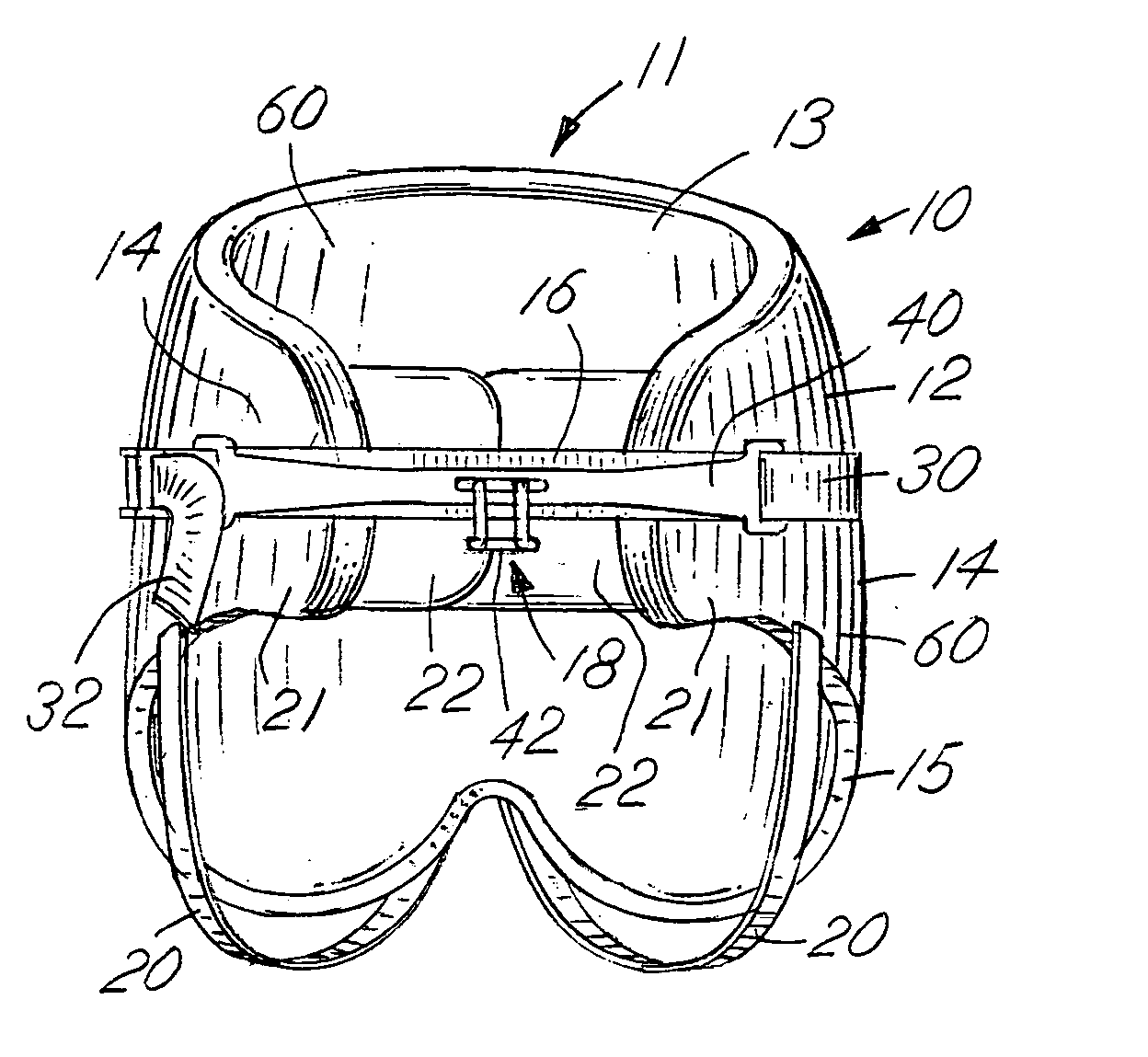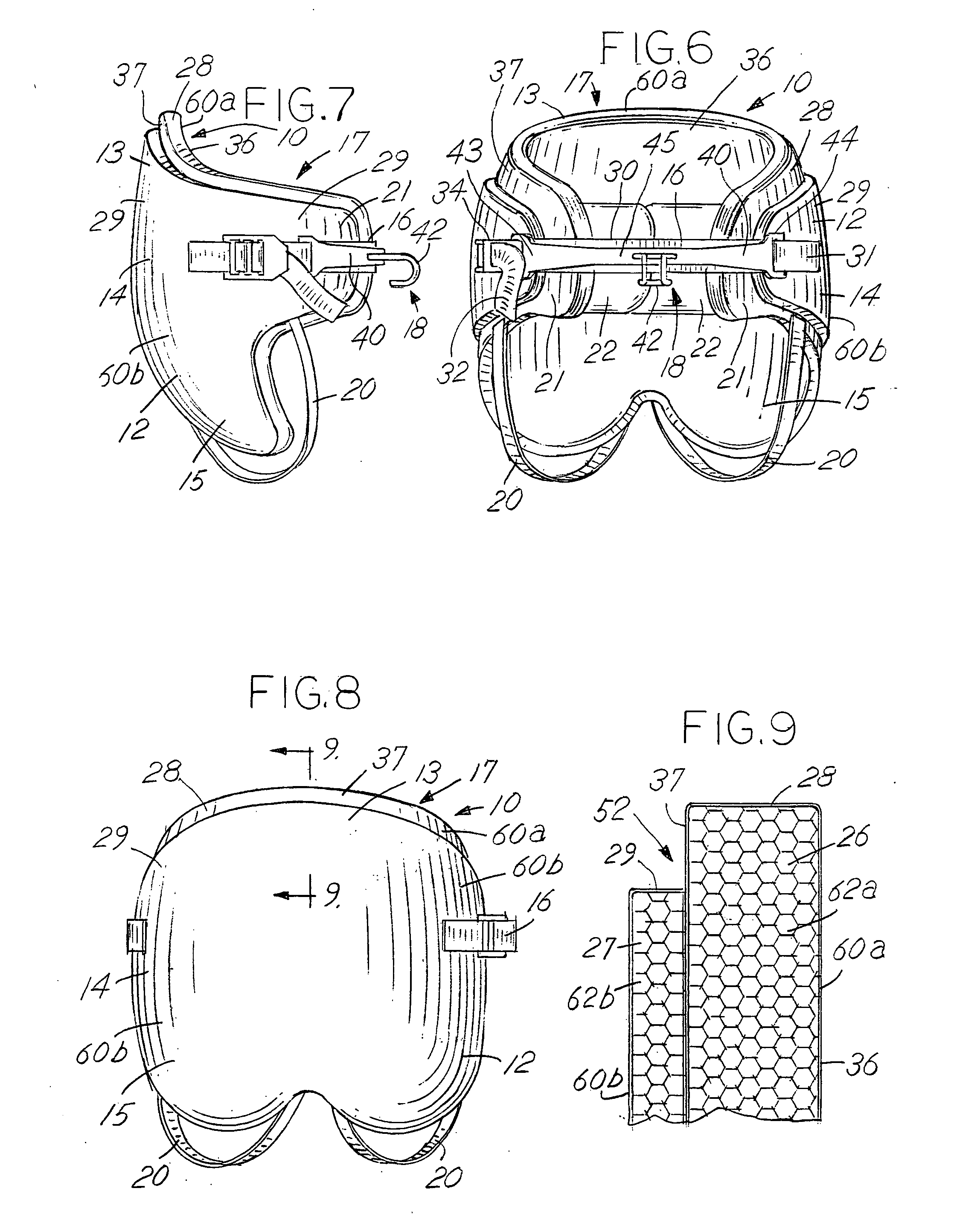Buoyancy harness
a harness and buoyancy technology, applied in the field of buoyancy harnesses, can solve the problems of not providing sufficient flotation to help an injured or tired rider stay afloat, the harness does not extend as far, and the non-inflatable waist or seat harness does not assist in keeping a rider afloat in water
- Summary
- Abstract
- Description
- Claims
- Application Information
AI Technical Summary
Benefits of technology
Problems solved by technology
Method used
Image
Examples
Embodiment Construction
[0040]FIGS. 1, 2, 3, and 4 illustrate one embodiment of the present invention in which the buoyant harness 10 is a seat harness 11. The seat harness 11 may include a body portion 12, a fastener 16, and a connector 18. The seat harness 11 may also include at least one thigh strap 20, each thigh strap 20 being configured to wrap around at least a portion of the upper thigh or groin region of the rider.
[0041] The body portion 12 of the seat harness 11 is comprised of an outer region 60, an inner region, an upper region 13, a mid region 14, and a lower region 15, and is configured to fit around at least a portion of the lower abdomen and pelvis of the rider. The lower region 15 of the seat harness 11 may be configured to surround at least a portion of the rider's buttock. The mid region 14 may include arms 21 that are configured to extend across at least a portion of the lower abdomen and / or the frontal waist region of the rider. Although the arms 21, as illustrated in FIG. 1, are show...
PUM
 Login to View More
Login to View More Abstract
Description
Claims
Application Information
 Login to View More
Login to View More - R&D
- Intellectual Property
- Life Sciences
- Materials
- Tech Scout
- Unparalleled Data Quality
- Higher Quality Content
- 60% Fewer Hallucinations
Browse by: Latest US Patents, China's latest patents, Technical Efficacy Thesaurus, Application Domain, Technology Topic, Popular Technical Reports.
© 2025 PatSnap. All rights reserved.Legal|Privacy policy|Modern Slavery Act Transparency Statement|Sitemap|About US| Contact US: help@patsnap.com



